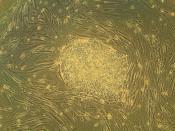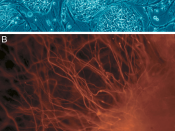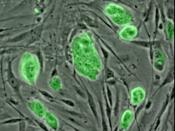Gene therapy is a new method of disease treatment that uses genes. In the future, this technology may allow doctors to treat a disorder by inserting a gene into a patient's cells instead of using drugs or surgery. Researchers are testing several approaches to gene therapy, including:â¢Replacing a mutated gene that causes disease with a healthy copy of the gene.
â¢Deactivating, or "turning off," a mutated gene that isn't functioning properly.
â¢Introducing a new gene into the body to help fight a disease.
Although gene therapy is a promising treatment option for a number of diseases, the technique remains risky and is still under study to make sure that it will be safe and effective. Gene therapy is currently only being tested for the treatment of diseases that have no other cures.
Many scientists are focussing genetic metabolic diseases. A possible way to treat these disorders in humans is gene therapy.
This is a technique where the absent or faulty gene is replaced by a working gene, so that the body can make the correct enzyme or protein and eliminate the cause of the disease.
The most likely candidates for future gene therapy trials will be rare diseases such as Lesch-Nyhan syndrome, a distressing disease in which the patients are unable to produce a particular enzyme. This leads to a bizarre impulse for self-mutilation, including very severe biting of the lips and fingers. The normal version of the defective gene in this disease has now been duplicated.
If gene therapy does become practical, the biggest impact would be on the treatment of diseases where the normal gene needs to be placed into only one organ.
The types of gene therapy described so far all have one thing in common, that the tissues being treated are somatic (non embryonic cells).


